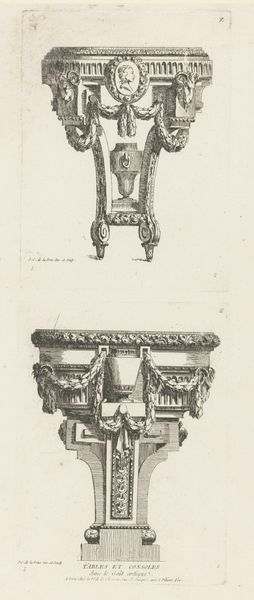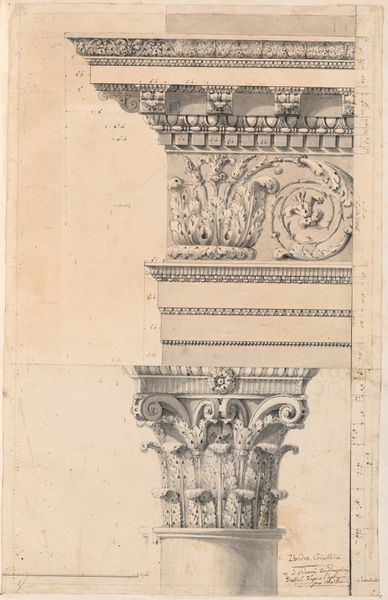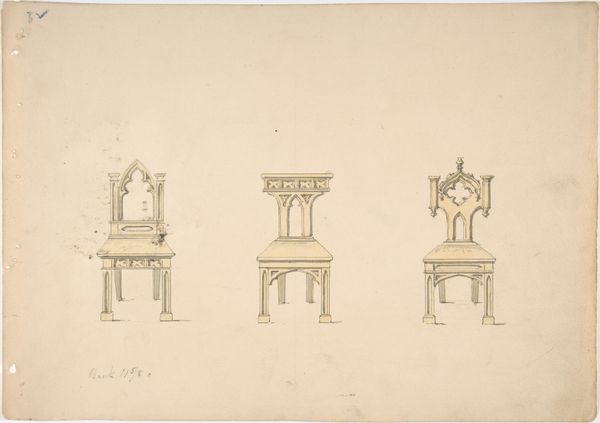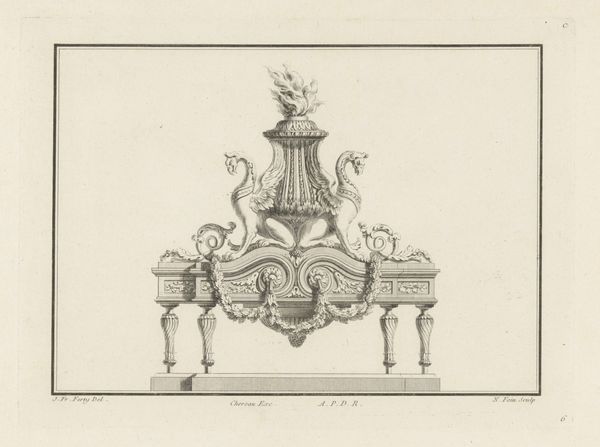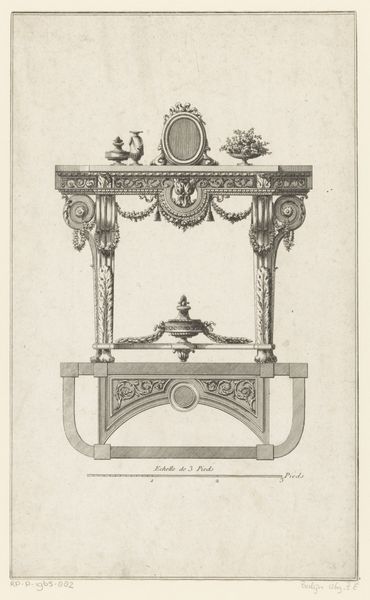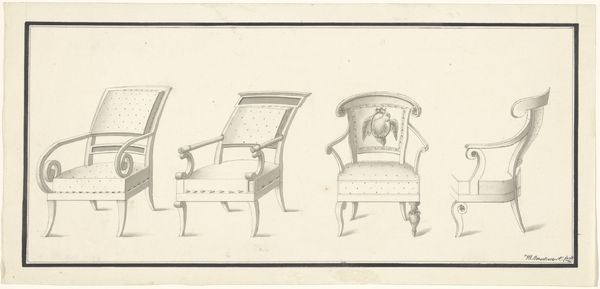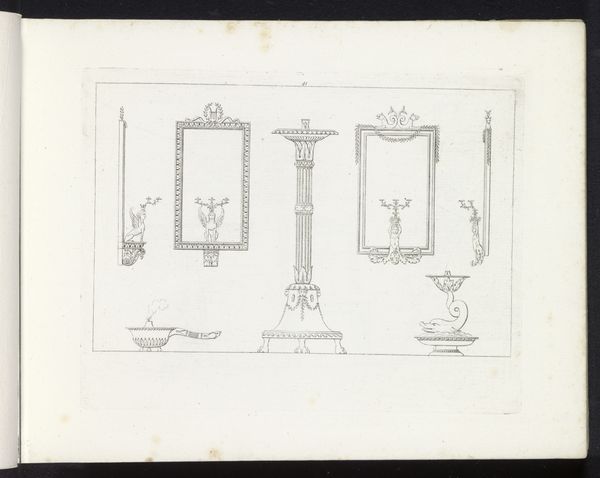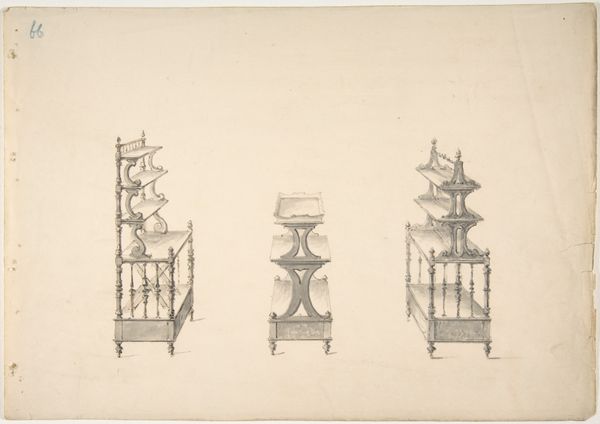
Three Designs for Architectural Trophies 1734 - 1789
0:00
0:00
drawing, print
#
drawing
#
neoclacissism
# print
#
geometric
#
decorative-art
Dimensions: 7 5/16 x 13 1/8 in. (18.6 x 33.3 cm.) (irregular)
Copyright: Public Domain
Curator: Oh my, how deliciously decadent! Looking at this drawing by Jean Charles Delafosse, it feels like staring into the dream journal of an 18th-century stage designer. All grandiose curves and symbolic overload! Editor: You've captured the aesthetic perfectly. This piece, titled "Three Designs for Architectural Trophies," dates roughly from 1734 to 1789, placing it squarely in the era of Neoclassical design. Delafosse was known for his detailed renderings intended for engravings, and this drawing feels very characteristic of that style, almost like an architect's brainstorm. Curator: I’m instantly drawn to the symbolic chaos, it’s as if someone was challenged to cram every element of power, victory, and refinement into these relatively contained forms. What purpose could these trophies really serve, practically? Editor: Functionally, these designs would likely never translate literally into architecture. Delafosse's prints would be more broadly circulated, and they would influence decorative motifs that can be found in everything from furniture design to public monuments and ephemeral decorations. It’s the distribution of style. Curator: Ah, so less literal trophies, more like trophies of…taste itself? I adore the dizzying combinations he’s cooked up; one's like an explosion in a musical instrument factory, complete with portrait cameos and burning urns. Do you see a progression among the three? It’s odd how the central design looks more sedate. Editor: I read the composition very differently! Notice the subtle references, for example, in the military equipment depicted on the design to the right; each serves as an aspirational nod toward professions and domains of civic life. It's a celebration of industry through geometry. The central design is like an idealized public fountain. Each uses drawing as both the technique and technology that can convey the decorative complexity and cultural coding available at the time. Curator: I like your attention to that. Maybe that tamer design is the visual exhale, a breather amid the otherwise escalating visual opulence. Although if these showed up on furniture in my parlor, I’d fear for my sanity! Editor: And what is taste, after all, if not a delicate balance between delight and overwhelm? Jean-Charles Delafosse invites us to consider just that in these drawings. The echoes of this can still be found in museums, architecture and culture to this day.
Comments
No comments
Be the first to comment and join the conversation on the ultimate creative platform.
